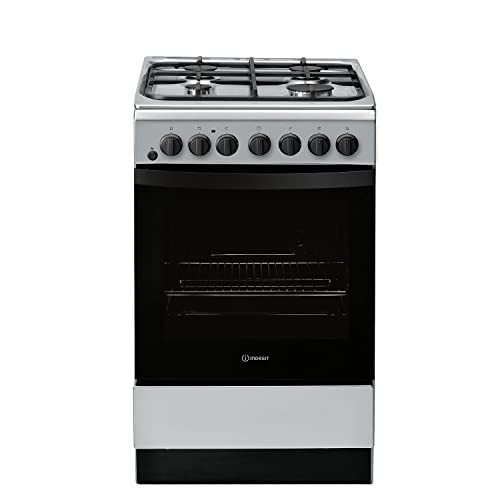One Of The Most Untrue Advices We've Ever Been Given About Oven Hob
Understanding Oven Hobs: The Heart of Culinary Crafting
In the world of modern kitchen areas, the oven hob stands out as a vital home appliance. Not just is it a central part for cooking a range of meals, but it likewise influences kitchen visual appeals, performance, and efficiency. This short article explores the kinds of oven hobs, their features, benefits, and upkeep suggestions. Additionally, it deals with some frequently asked concerns to supply a detailed understanding of this important kitchen appliance.
Kinds Of Oven Hobs
Oven hobs can be classified into several types based upon their energy source and design. Understanding these variations can help customers make notified choices when selecting the perfect hob for their kitchen needs.
1. Gas Hobs
Gas hobs utilize natural gas or propane as fuel, providing exact temperature level control and rapid heat. They are favored by numerous chefs for their capability to offer visual feedback through flame.
Pros:
- Quick heat-up time.
- Precise temperature level adjustments.
- Suitable with all types of pots and pans.
Cons:
- Requires a consistent gas supply.
- Security interest in open flames.
- Requires more maintenance.
2. Electric Hobs
Electric hobs are powered by electrical power and feature smooth glass or ceramic surface areas. Oven And Hobs For Sale are available in 2 types: coil and strong.
Pros:
- Sleek look.
- No open flames, reducing security dangers.
- Easy to clean.
Cons:
- Slower to warm up and cool off.
- May need specific pots and pans (induction).
- Some may have uneven heat circulation.
3. Induction Hobs
Induction hobs use electromagnetic energy to straight heat up pots and pans. They only work with ferromagnetic pots and pans.
Pros:
- Very energy-efficient.
- Quick heating & cooling times.
- Safe, as the surface stays reasonably cool.
Cons:
- Limited to particular kinds of cookware.
- Higher initial cost.
- Can produce sound when in usage.
4. Solid Plate Hobs
These electric hobs feature strong metal plates that warm up and retain heat for cooking.
Pros:
- Durable and trusted.
- Straightforward operation.
Cons:
- Takes time to warm up.
- Less efficient than induction and gas designs.
Hob Type
Heat Source
Visual appeals
Upkeep
Gas Hobs
Gas
Standard
Moderate
Electric Hobs
Electricity
Modern/Sleek
Low
Induction Hobs
Electromagnetic
Contemporary
Low
Strong Plate Hobs
Electricity
Traditional
Typical
Functions to Consider When Choosing an Oven Hob
When picking the perfect oven hob for your kitchen, there are a number of necessary features to consider. These include:
- Size: Ensure the hob fits the designated space in your kitchen.
- Number of Burners: Consider your cooking style and the number of burners you'll need.
- Control Type: Look for user-friendly controls, whether touch-sensitive or knobs.
- Safety Features: Many contemporary hobs include precaution like flame failure gadgets or kid locks.
- Energy Efficiency: Choose energy-efficient models to conserve on energy expenses and decrease your ecological effect.
Benefits of Using an Oven Hob
The oven hob supplies several advantages that cater to both amateur cooks and professional chefs. Here are some crucial benefits:
- Versatility: Whether boiling, frying, simmering, or sautéing, an oven hob accommodates numerous cooking methods.
- Convenience: Many hobs featured extra functions like timers and automated shut-off systems for added benefit in hectic cooking areas.
- Boosted Cooking Control: The instant heat actions of gas and induction hobs permit much better control over cooking temperature levels.
- Design Enhancement: Modern hobs can improve the overall aesthetic of a kitchen, adding a contemporary touch.
Maintenance Tips for an Oven Hob
To ensure the durability and efficiency of an oven hob, proper upkeep is crucial. Here are some upkeep tips:
Regular Cleaning:
- Use a soft cloth and mild detergent to tidy surface areas after each use.
- For induction and ceramic hobs, avoid abrasive cleaners to prevent scratching.
Look for Wear and Tear:
- Inspect rubber seals and connections in gas hobs frequently for any damages or leakages.
- Ensure electrical connections are safe and secure in electric hobs.
Expert Servicing:
- Schedule regular upkeep checks with a qualified technician to prevent major concerns.
The oven hob is a vital part in any kitchen, serving as a focal point for culinary endeavors. Whether selecting gas, electric, or induction, comprehending the numerous types, functions, and maintenance requirements is necessary for making a knowledgeable choice. A well-chosen hob not only improves cooking efficiency however likewise improves the total kitchen experience.
Frequently Asked Questions (FAQs)
1. What type of hob is best for a beginner?
Electric hobs are frequently preferred by beginners due to their ease of use and maintenance.
2. Can I use all pots and pans on an induction hob?
No, induction hobs need ferromagnetic cookware for them to work appropriately.
3. How do I understand if my gas hob is working effectively?
Routinely inspect for even flame distribution and listen for any hissing sounds that might suggest leaks. If in doubt, consult a professional.
4. Is a higher rate always better for hobs?
Not necessarily. While higher-priced designs may provide advanced features, several mid-range products offer outstanding efficiency and durability.
5. Can I set up a hob myself?
It is suggested to hire a professional, particularly for gas hobs, due to security concerns and local regulations.
By comprehending the nuances of oven hobs, home cooks can make a well-informed choice that lines up with their culinary ambitions and kitchen designs. Choosing the right hob improves both the cooking experience and kitchen looks, making it a crucial investment for any home.
